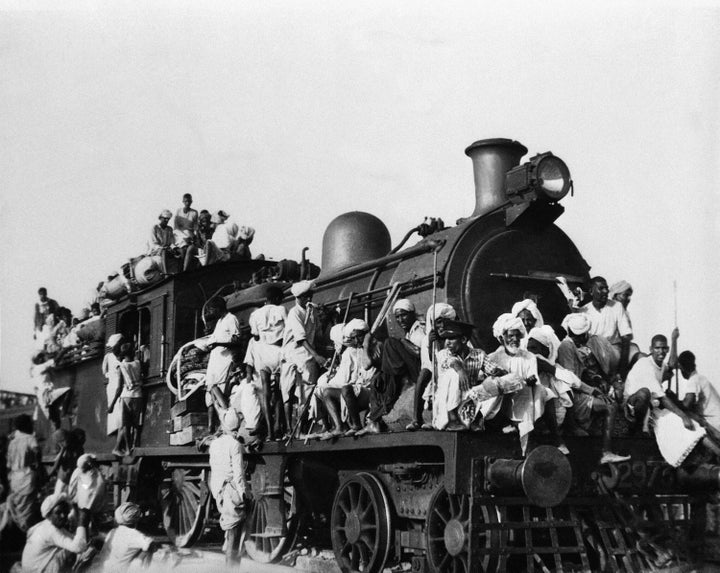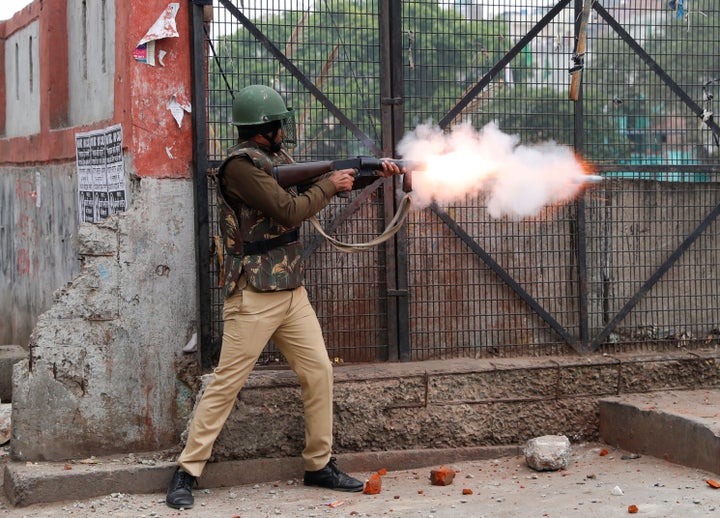Violent mobs armed with sticks and guns hunting for victims have set ablaze parts of India’s capital city, in the worst sectarian unrest the country has seen in decades.
At least 20 people are dead and hundreds more injured as New Delhi fractures along religious lines, setting up violent confrontations between the Hindu majority and Muslims.
Indian prime minister Narendra Modi has called for his “sisters and brothers” to restore “calm and normalcy”. But just who exactly the PM considers his “sisters and brothers” is at the very heart of the unrest.
Who is Narendra Modi?
Narendra Modi is an ultra-nationalist Hindu who won a first term as PM in 2014 and a second last year.
His supporters view him as a hero, prioritising the rights of Hindus who make up around 80% of India’s population.
His critics view him as a Hindu supremacist who will do anything – including tacitly allowing them to be killed at the hands of vigilante mobs – to suppress the rights of Muslims, who make up around 15% of the population.

Give me some historical context
When British rule in India ended in 1947, the subcontinent was partitioned into two nation states – the Hindu-majority India that adopted a secular constitution and Muslim-majority Pakistan.
The imposition of these new borders sparked a mass two-way migration of 15m people. On one hand, Muslims who had lived in what was now to become India moved to Pakistan. On the other, Hindus who had lived in what was now to be be Pakistan moved to India.
The transfer of populations was a brutal and bloody process and more than a million people were killed.

Not everyone made the move, however, and minorities remained in both India and Pakistan.
Religious tensions have simmered for decades, and occasionally erupted into violence, but successive Indian leaders have generally tried to maintain a delicate status-quo of calm.
Not so Modi, who has taken a number of steps seen as discriminating against Muslims – most notably a contentious new citizenship law that fast-tracks naturalisation for foreign-born religious minorities of all major faiths in South Asia except Islam.
Incidents of violence have been on the rise since Modi took power and Hindu “cow-vigilante” groups have killed a number of Muslims over differences in how the animals are treated by the two faiths.
Modi’s government and security forces have been accused of standing by and allowing attacks to happen or of failing to prosecute those responsible.
What has happened this week?
Possibly timed to coincide with the increased visibility brought by Donald Trump’s visit to India this week, Muslims have stepped up their protests against the citizenship law.
They have been met on the streets by Hindus, sparking violent confrontations that security forces have failed to fully control despite the use of tear gas, pellets and smoke grenades.

Reuters witnesses saw mobs wielding sticks and pipes walking down streets in parts of northeast Delhi on Tuesday, amid arson attacks and looting.
Thick clouds of black smoke billowed from a tyre market that was set ablaze.
Many of the wounded had suffered gunshot injuries, hospital officials said. At least two mosques in northeast Delhi were set on fire.
What are both sides saying about the causes of the violence?
India’s junior home minister Kishan Reddy told Reuters’ partner ANI on Monday that the violence was “a conspiracy to defame India”, at a time when Trump was visiting the country.
Some of those protesting at the citizenship law alleged, however, that Modi’s ruling Bharatiya Janata Party (BJP) and its supporters were targeting Muslims and instigating the violence.
“We have no weapons, but they are firing at us,” said Mohammad Shakir, a demonstrator opposed to the law. “This BJP is targeting Muslims. They want to turn India into a Hindu country.”
On social media some of the rhetoric has taken a dark turn, with one Indian commentator openly calling for violence against Muslims in the most stark of terms.
What has Trump said?
The president steered clear of criticising Modi or of acknowledging the violence, instead praising India as a tolerant country.
“India is a country that proudly embraces freedom, liberty, individual rights, the rule of law and the dignity of every human being,” he told a rally of over 100,000 people in Modi’s home state of Gujarat.
“Your unity is an inspiration to the world.”